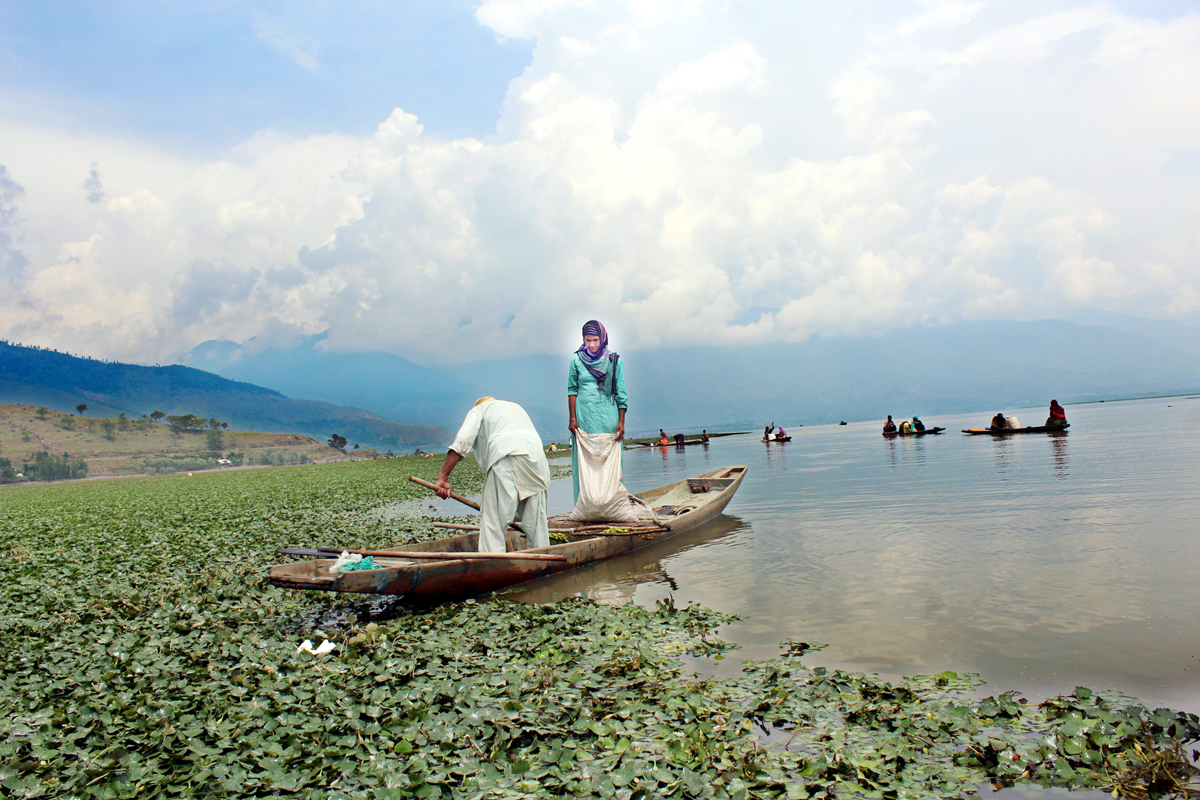Dr Farooq Peer
During the disastrous Kashmir floods of 2014 as the valley was inundated, it was realized that the capacity of wetlands to hold water had seriously shrunk. Whether it is the Dal Lake that is clearly crying for attention or the adjacent Nigeen Lake that looks dying day by day or the Wular Lake that has been shrinking alarmingly and mainly due to the negligence of the authorities.
I have vivid childhood memories of the Wular, when it would look like an ocean to me as I stood on its banks with my friends on the occasion of school excursion. Now as I see the Wular looks to be dying a slow death, with plenty of moss and algae in its water. The Wular has been known for absorbing excess water during excess rains, but the failure of it along with other wetlands of the valley to capture surplus clearly demonstrates as to where the lake is heading towards
One of the largest freshwater lakes in Asia, Wular Lake has shrunk to nearly half its original area in the last few decades due to administrative apathy, extensive pollution, siltation and encroachment. The lake in north Kashmir’s Bandipora district is dying a silent death really which can be viewed on a visit to this fantastic lake. The lake confronts environmental threats including the conversion of large parts of catchment areas into agriculture land, siltation, rampant willow plantation, encroachment, untreated sewage, solid waste and weed infestation. It covered an area of 217.8 sq km which included 58 sq km of associated marshes in 1911. The area was reduced to 86.71 sq km from 1911 to 2007. But as per the State’s 2013 revenue records, the lake’s area has shrunk to 75 sq km. By and large, there has been reduction of the lake area by 45% mainly due to conversion for agriculture (28%) and plantation (17%). Further, associated marshes have been reduced by 70% again due to conversions for agriculture and settlements. One fifth of the water holding capacity has been lost over last three decades due to siltation from catchments and wetland conversions for agriculture and willow plantations.
The Wular operates as a proficient basin for floodwaters, maintaining a balance in the hydrographic system in the Valley, therefore plays a significant role in water safekeeping in the Kashmir valley by regulating the release of floodwaters. It is believed that the straight release of solid and liquid wastes from the settlements all along River Jhelum mainly from Srinagar city and other towns in the upstream area have led to degradation of water quality and health risks to the areas around the lake. In view of the huge biodiversity values, the lake was declared a Ramsar site (wetland of international importance) in 1990. But the conservation process started only in 2011 when the Centre agreed to release Rs 120 crore in four instalments for conservation and restoration of the lake and nobody knows what is happening with that project and at what pace.
The Wular Lake, one of the largest Fresh water Lakes in Asia, could be a great tourist destination. A visit around the lake covered by green mountain tops attracts and soothes the human souls. The beautiful and natural spot with green plants/ shrubs/ fields and with a majestic flowing stream upon a vast area round the lake under the mountain hill of Hazrat Bab Shukr-ud Din (RA) could have been developed as a very great tourist spot. But this probable prospective tourism attraction lake has been ignored by all regimes. It has immense potential of water sports and water ski which has been recognized and even recently launched by the Government of Indian Tourism in collaboration with the Kerala Tourism and J&K Tourism. But this endeavour may also go to the winds due to the bad condition of roads leading towards this great lake and courtesy to the indifferent attitude of the Governments. The great and prominent Kashmiri King Zain ul Aabdin, who had got done the construction of the artificial island of Zaina Lank in the middle of the lake in 1444, could be developed as another tourist attraction as has been carried in the midst of the Dal Lake. With the tourist inflow, economic growth and promotion could have been enforced in view of the tremendous capacity of fish production within the waters of the lake. There is no doubt that the Wular Lake has immense tourism potential and the Government of JK ought to be very much interested in developing this place as a tourist destination by creating infrastructure and other facilities at this place. The valley is having shortage of drinking water and the protection of this lake can save us from any more trouble on this front.
Time and again the worsening condition of Wular Lake has been highlighted by the environmentalists and locals which needs attention for restoration of its past glory. However, rarely have the authorities come forward with a plan on how to restore the beauty of this great lake which is our pride. This leads to a question-why is the Wular being ignored? The Wular of today and what was there before 30 years leaves a lot of unanswered questions.
Trending Now
E-Paper


